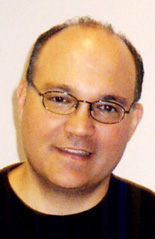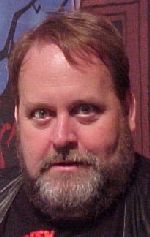Comics /
Cult Favorite
Breaking and Entering into the Comics Business
By Philip Schweier
March 28, 2006 - 10:58
Once a year, the Savannah College of Art & Design’s Sequential Art department hosts its annual Editor’s Day. Recent guests have included Axel Alonzo, editor, Marvel Comics; Jeremy Ross from Tokyo Pop; Bob Schreck, editor, DC Comics; and Chris Staros, editor-in-chief & publisher, Top Shelf. During their visit to the college, they review portfolios and offer real world advice to aspiring comics creators.
•••••••••••••••••••••
Years ago, comics publishers would accept open submissions from fans, and were often willing to train potential talent in the art of creating comics for less demanding audiences. It served as a sort of farm system, breaking people in and slowly putting them on bigger and bigger books. Times have changed. Comics are now more sophisticated, and that system isn’t working anymore. Blind submissions are no longer a viable way for aspiring comics writers and artists to break in. In recent years, most companies have stopped accepting them, and the material is either returned unopened or destroyed.
 |
Chris Staros, editor and publisher at Top Shelf, recommends networking within the industry, which enables editors to become familiar with you as well as your work. Conventions are the most viable means of getting to know people who could give you a leg up. “We're actually the publisher I think that attends the most conventions of any publisher. We do 20 a year usually.”
Staros describes comics as a very intimate business. “Fans really love the fact that they can meet the creators and be friendly with them, as opposed to say trying to meet your favorite rock star and having to deal with an entourage whose only power is to deny you access. In comics you have access to everyone, and if you're polite, you can establish long-term convention relationships with people, and sort of become friends. So it's important for you to set up and be at as many shows as possible and help sell your work.”
The biggest comics convention in North America is held each summer in San Diego, and according to DC editor Bob Schreck, the 40th floor bar at the San Diego Hilton is great place to go and mingle with comics pros – which only reflects what transpires back home in New York. “At DC and I know at Marvel as well,” he says, “Friday comes and it's been two or three months, so everybody goes out to this bar and we hang out. I'm usually the one that gets on the phone: ‘Hey. There's going to be a bunch of editors at this bar. Come annoy us.’ My fellow editors love me for it. But there's always some newcomer, some editor or writer or artist that comes on down.”
Certainly, being in New York never hurts. "There's something about going up to the office,” says Klaus Janson, “And seeing the people that you're dealing with and establishing a one-to-one relationship with your editor, that I find personally invaluable. There's something you might call the schmooze factor, where if your editor likes you and other people in the office like you, they're going to be open to you, and you're going to get work.
Schreck tells of a gentleman from Australia he met some years back at the San Diego con. “He really wanted to break in. I said, ‘Well, you live on Mars, man.’ And he just moved to Brooklyn, sent me an email and ... I know he thinks he's getting work next week and he's not, but he's got better odds because he's here. So it doesn't hurt to have your face in there. Again, as long as you're always a polite squeaky-wheel, you will get some oil, but if you're a real pain in the ass, stay in Australia.”
Marvel editor Axel Alonzo agrees. “Moving to New York is definitely an advantage there because we oftentimes need quick inking jobs done, so if you're good at what you do, and you can show up on the N train an hour later, take the pages home for the weekend, and get them done by the Monday, you're more likely to get the job than if you live in Australia. It's 11 hours ahead, so there's no good time to call Australia.
Schreck suggests that sometimes, challenging situations can provide an inker with a unique opportunity. “I think it is a little easier to get a job as an inker because of the situation where the penciler's driven you to the point of no return and it might look like pizza, but it'll be out tomorrow. You get an inker and keep going, and then if they prove themself, they keep coming back.
“I look for somebody who's versatile,” he adds. “Somebody who can jump from one book to another and still manage to not destroy what's going on. If they are so much their own inker, you're not going to see the penciler underneath. I look for somebody that really can get it and step back a bit.”
Which is not to say that inking jobs are always easy to come by in the comic book field. Many artists ink themselves or come as part of a package with another inker.
Today, honing one’s craft to an acceptable level often requires a great deal of commitment and a certain amount of sacrifice. “The best thing to do is drive a school bus or get a night watchman job,” recommends Schreck. “You don't want to be drawing with a full time job, and start at 10:00 at night because by 12:30-1:00 at night, you're off your game. You're tired. You want to be able to remain sparky when you draw.
“If you're a night watchman, you can sleep all day, go to work, check the back door, draw for four hours, check the back door again, draw for four more hours, and you're done,” he says. “You're not going to get rich, but you're going to have time to draw.”
However, what is more important than artistic talent is the ability to tell an engaging story in the form of a comic book. Jeremy Ross, editorial director at TOKYOPOP, says “It's absolutely essential that you show us sequentials and not pin-ups. There's nothing that will turn off an editor faster than not seeing sequentials. You don't always have to spend half a year drawing 20 pages fully finished version of your story in order to sell it. The most important thing though is ‘less is more.’ You've got busy editors who can judge things quickly and they're going to see you as more professional and more promising if you can just show the tip of the iceberg and make them want to make the call to you and say, ‘I want to be your champion and get this sold to the company and get it made. Tell me more about this.’
According to Marvel editor Axel Alonzo, there's an old editor's axiom. “If you're an artist, and you're two of three things, you will probably be employed. Good, meaning talented; quick, meaning able to meet a deadline; and nice, meaning loosely that we don't dread picking up the phone to speak with you, that you act like a professional, that you're nice and not an asshole.
“If you're good and you're quick,” he explains, “We don't care if you're nice. If you're nice and you're quick, there are times that we don't care if you're good. We just need it done. If you're good and you're nice, we don't care if you're quick. We'll design something for you that's long term. So, if you're all three of those things, then you're going to be in great shape.”
An editor can determine within moments if an artist has the talent to work steadily in the comics field. Breaking in as a writer is much more challenging. “The one advantage you have when you send your samples to an editor is that upon opening that package, they're going to have an immediate visceral response that's not going to require their time,” Alonzo says. “If you send a writing sample, you're requiring that I sit down, I clear myself the mental space to sit down and read that instead of this other stack of things I meant to read.”
Staros advises that if you’re going to send somebody something that’s written, it’s necessary to make sure that there’s an extremely well-written and captivating synopsis for it. “You need a concise thing that’s really going to grab them and make them think ‘Well, that’s a clever idea, I’m going to read the first few pages of the script.’”
Ross adds, “The thing that we always look for is somebody who can give us a log-line, one sentence that encapsulates what is really cool about this idea, followed by a paragraph telling what the story is about. It's like layers of bait. We really want people who will draw and send us their story and keep all that excessive detail and obsessive pages and pages describing characters for later. Make us ask for that. Just give us a page or two with the log-line and a paragraph and maybe the story arc over the series.”
Another obstacle for aspiring writers is that the comics industry has begun to attract talent from other formats. “You're seeing a lot of other people coming in from other mediums,” he adds, “From writing screenplays to playwrights to TV and movie what-have-you. The long and short of it is that it's getting more competitive.”
However, one doesn’t have to be a best-selling author, though it certainly helps. Many editors recommend self-publishing, in the form of mini-comics, which are usually black and white, and often half the size of mass marketed comics. The creator publishes them on a budget with relatively low press runs of 1,000-2,000. Such “ashcans” enable original material to be published in some form, protecting one’s copyright while at the same time protecting publishers from it.
However, a large press run may not make much of a difference. It is suggested that you can do pretty well for yourself with a circulation of five, if you can get in front of the right five people.
As a calling card, mini-comics demonstrate not just your ability to tell a story in pictures, but also your ability to self-promote. “Therefore you’re a better commodity to a publisher, because you’re working it, not just showing your pages around,” adds Staros. “It says you’re willing to get out there and you’re really, really trying to do this.”
Whether an artist or writer (or colorist or letterer), most professionals will agree that it pays to hone your craft over many years. Even after decades of writing or drawing, it may take some years to get a publisher to take a chance on your idea. The key is not to get discouraged. If each subsequent rejection can be turned into an opportunity to improve your abilities a little bit more, eventually there is no way a comics company WON’T take a chance on you.
Praise and adulation? Scorn and ridicule? Email me at philip@comicbookbin.com.
Last Updated: August 31, 2023 - 08:12


